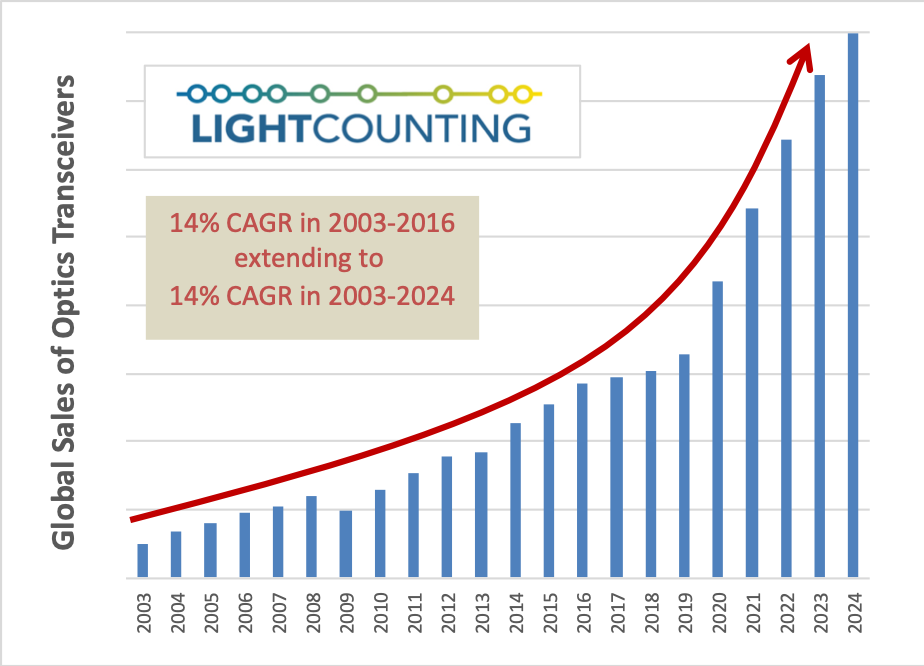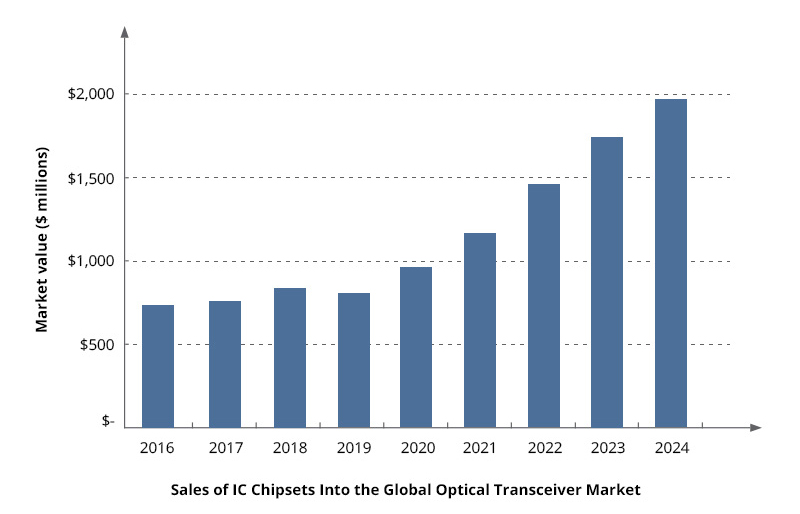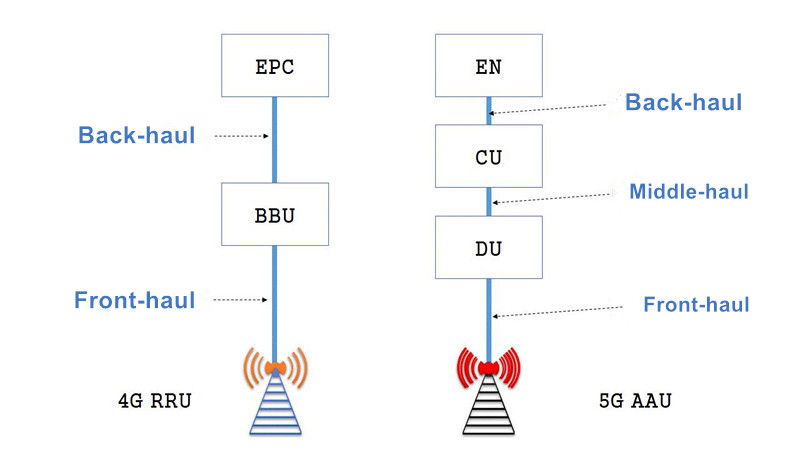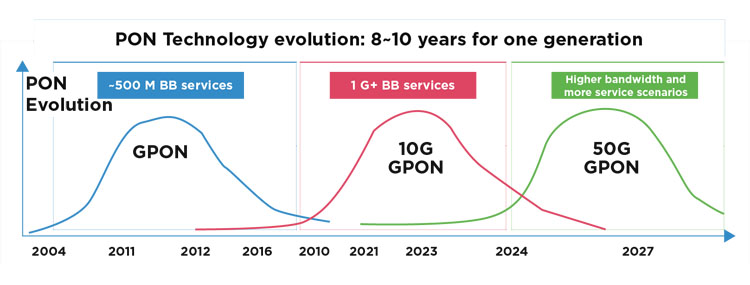China International Finance Securities recently reported that the global Optical Transceiver market is projected to reach over USD 10 billion by 2021, with the domestic market accounting for more than 50 percent. In 2022, the deployment of 400G Optical Transceivers on a large scale and a rapid increase in the volume of 800G Optical Transceivers are expected, along with continued growth in demand for high-speed optical chip products. Additionally, according to Omdia, the market space for optical chips used in 25G and above-rate Optical Transceivers is set to increase from USD 1.356 billion in 2019 to USD 4.340 billion in 2025, with an estimated compound annual growth rate of 21.40 percent.
Looking at the growth of demand for optical chips from the forecast of the Optical Transceiver industry.
LightCounting predicts that the global optical transceiver market will grow by 4.34% in 2023, with a compound annual growth rate of 11.43% from 2024 to 2027.
According to the credit of CICC, the global market size of optical chips for optical communications in 2021 is expected to be 14.67 billion yuan. The market sizes of 2.5G, 10G, 25G and above optical chips are 1.167 billion yuan, 2.748 billion yuan, and 10.755 billion yuan respectively. Omdia predicts that the overall market size of optical chips used for 25G and above optical modules in 2021 will be 1.913 billion US dollars, or about 13 billion yuan.
Based on these data, it is estimated that the global communication optical chip market will account for 18-20% of the optical module market in 2021. The corresponding optical chip market size is calculated based on 18% of the low-end optical module market and 20% of the high-end market.
At present, most of the optical transceivers with mature product structure adopt the four-channel structure of PSM4 or CWDM4. Optical chips of 10G and below roughly correspond to 1G, 10G, and 40G optical modules. According to the forecast data of LightCounting, the shipments of 1G, 10G, and 40G digital communication optical modules will start to decline from 2023, resulting in a decline in the market size from 614 million US dollars in 2022 to 150 million US dollars in 2027. Taking 18% as the proportion, the corresponding optical chip market size is expected to drop from US$111 million in 2022 to US$27 million in 2027.
The data center network architecture surpasses the outdated 10G/40G CLOS system. Most domestic Internet companies operate on 25G/100G CLOS architecture, while North American companies are transitioning to more advanced 100G/400G CLOS and 800G network architectures. The high-speed digital optical modules in the range of 100G-800G mainly use DFB and EML laser chips, and the baud rate is 25G, 53G, 56G. Most of the 800G optical module products currently on the market adopt the 8*100G architecture and use eight 56G EML PAM4 optical chips.
LightCounting’s forecast data shows that the shipments of optical modules operating at 25G, 100G, 400G and 800G will continue to grow from 2023 to 2027. During this period, the market size is expected to increase from USD 4.450 billion to USD 5 billion in 2022. It will be US$7.269 billion in 2027, an impressive 5-year compound annual growth rate of 10.31%. The corresponding optical chip market size is also expected to grow from US$890 million to US$1.453 billion.
Wireless back-haul 10G demand is stable, 25G demand is growing
As of November 2022, China’s 5G infrastructure has reached a milestone, with 2.287 million base stations deployed nationwide. Although the growth rate of base station construction has slowed down, the data shows that with the continuous improvement of 5G penetration and the enrichment of applications, the demand for expansion of wireless midhaul and backhaul networks is on the rise. Although global 10G and 25G optical module shipments have been declining from 2022 to 2027, it is expected that the market size of wireless fronthaul optical modules will improve by 2026, when optical modules above 50G will begin to be deployed in batches. Industry experts believe that 50G and 100G optical modules may not drive the rebound of the 5G fronthaul market until 2026, while 25G and above 5G fronthaul optical modules are expected to stabilize at $420 million between 2023 and 2025. As the demand for 5G traffic continues to grow, the shipments of 5G mid-haul and 10G optical transceivers are expected to increase from 2.1 million units in 2022 to 3.06 million units in 2027, with a five-year CAGR of 7.68%. The growing market demand is expected to stabilize the 10G and below optical module market at $90 million, and the corresponding optical chip market is estimated at around $18.1 million. In the middle and backhaul market, the demand for 25G, 100G, and 200G optical modules is expected to maintain rapid growth from 2023, and the market size of 25G and above middle and backhaul optical modules is expected to increase from US$103 million in 2022 to US$171 million in 2027. The compound annual growth rate is 10.73%. The corresponding optical chip market is also expected to expand from approximately $21 million to $34 million.
Wired access 10G PON demand continues to grow
China’s 14th Five-Year Plan for the infocomm industry sets ambitious targets for the country’s digital infrastructure. During this period, the government plans to deploy a gigabit fiber optic network to speed up the construction of “gigabit cities” and expand the coverage of gigabit networks across the country. By the end of 2022, the three basic telecommunications companies expect the total number of fixed Internet broadband access users to reach 590 million. Among them, the access rate of 100Mbps and above was 554 million, an increase of 55.13 million over the previous year. At the same time, the number of access users with a rate of 1000 Mbps and above reached 917.5 million, an increase of 57.16 million over the previous year. Despite these advances, there is still room for improvement, with Gigabit subscriber penetration expected to be only 15.6% by the end of 2022. To this end, the government is promoting the construction of 10G-PON networks in cities and key areas. town, focusing on expanding coverage. By December 2022, the number of 10G PON ports with Gigabit network service capabilities will reach 15.23 million, covering more than 500 million households across the country. This makes China’s gigabit network scale and coverage level among the highest in the world. Looking ahead, the PON market will continue to develop, and LightCounting predicts that shipments of PON optical transceivers below 10G will decline from 2022. In contrast, 10G PON shipments are expected to grow rapidly, reaching 26.9 million units in 2022 and 73 million units in 2027, with a five-year CAGR of 22.07%. Although the market size of 10G optical modules will decline from its peak in 2022, the corresponding optical chip market will also decline from US$141.4 million to US$57 million. Looking ahead, 25G PON and 50G PON are expected to achieve small-scale deployment in 2024, followed by larger-scale deployment in the following years. It is estimated that the market size of 25G and above PON optical modules will exceed 200 million US dollars in 2025, and the corresponding optical chip market will reach 40 million US dollars. Overall, China’s digital infrastructure will continue to grow and develop in the coming years.
Post time: Mar-22-2023





